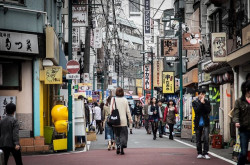
May 9, 2017
Naomi Kawase Hikari Film Review
A Polarizing Portrait of Sight and Sentiment
By Rob Schwartz
Few directors divide audiences quite like Naomi Kawase, and her 2017 film Hikari (English title: Radiance) is no exception. In this Naomi Kawase Hikari film review, we explore how the celebrated auteur—long a Cannes favorite—blends haunting visuals with quiet introspection, often blurring the line between poetic minimalism and overindulgent sentiment. Despite her acclaim on the international festival circuit, Kawase’s latest entry continues to stir debate: is it another masterstroke of atmospheric storytelling, or a beautiful yet frustrating misstep?
A Controversial Darling of Cannes
Director Naomi Kawase occupies one of the most envied, and controversial, positions in Japanese cinema. The leading international film festival, Cannes, adores her and has supported her like no other auteur in the history of Japanese movies. Her first feature-length fiction film Moe no Suzaku was awarded the Camera D’Or (best new director award) at Cannes in 1997, and in 2007 her fourth feature Mogari no Mori (The Mourning Forest) walked away with the Grand Prix (the 2nd most prestigious award at the fest after the Palme D’Or).
These honors seem to have assured her a lifetime place at the fest. Her 2011 effort, Hanezu, premiered in competition, and in 2013 she was a Cannes main competition jury member. Then once again her 2014 pic, Futatsu no Mado (Still the Water), premiered in competition. Many thought this to be the end of the love affair, as critics panned the work and some called it the worst flick at the event that year. But in 2015 An (Sweet Bean) was included in the much sought after Un Certain Regard section. Her current creation, Hikari, will premiere in competition at the fest later this month and open May 27 in Japan.
Kawase’s Signature Style: Poetic or Pretentious?
Kawase’s style is quiet, imagistic and atmosphere-driven, sometimes to the point of being incoherent. For example, her 2008 effort Nanayomachi was filmed in Thailand and most of the flick features two characters who don’t speak the same language. There’s no doubt that some of her frames are beautifully shot and the filmmaker’s background in documentary means the pieces often have a stark realism that can be affecting. But lately Kawase has been falling prey to pretentious profundity (as in Futatsu no Mado) or schmaltz, a criticism often levied at An, which also featured the male lead of Hikari, Masatoshi Nagase.
Final Thoughts: For Fans Only?
Nagase portrays Nakamori, a brilliant but irascible photographer who is in the last stages of going blind. He harangues heroine Misako (Ayase Mizuzaki) during a test run of her audio guide narration for the blind of a film-within-a-film. But Misako is improbably drawn to Nakamori, supposedly due to the genius of one of his photos of a sunset. The movie meanders between this and a subplot about her mother, replete with unnecessary detail, such as the contents of her late father’s wallet. There are some nice moments in Hikari, as when Nakamori photographs children, but in general the piece is infused with sentimentality and some overlong scenes. Kawase remains the most celebrated enigma in Japanese cinema, and Hikari will please her hardcore fans but won’t win many converts. (English title: Radiance; 101 min.)
Did you like this Naomi Kawase Hikari film review? Read more movie reviews in our On Screen in Japan column







